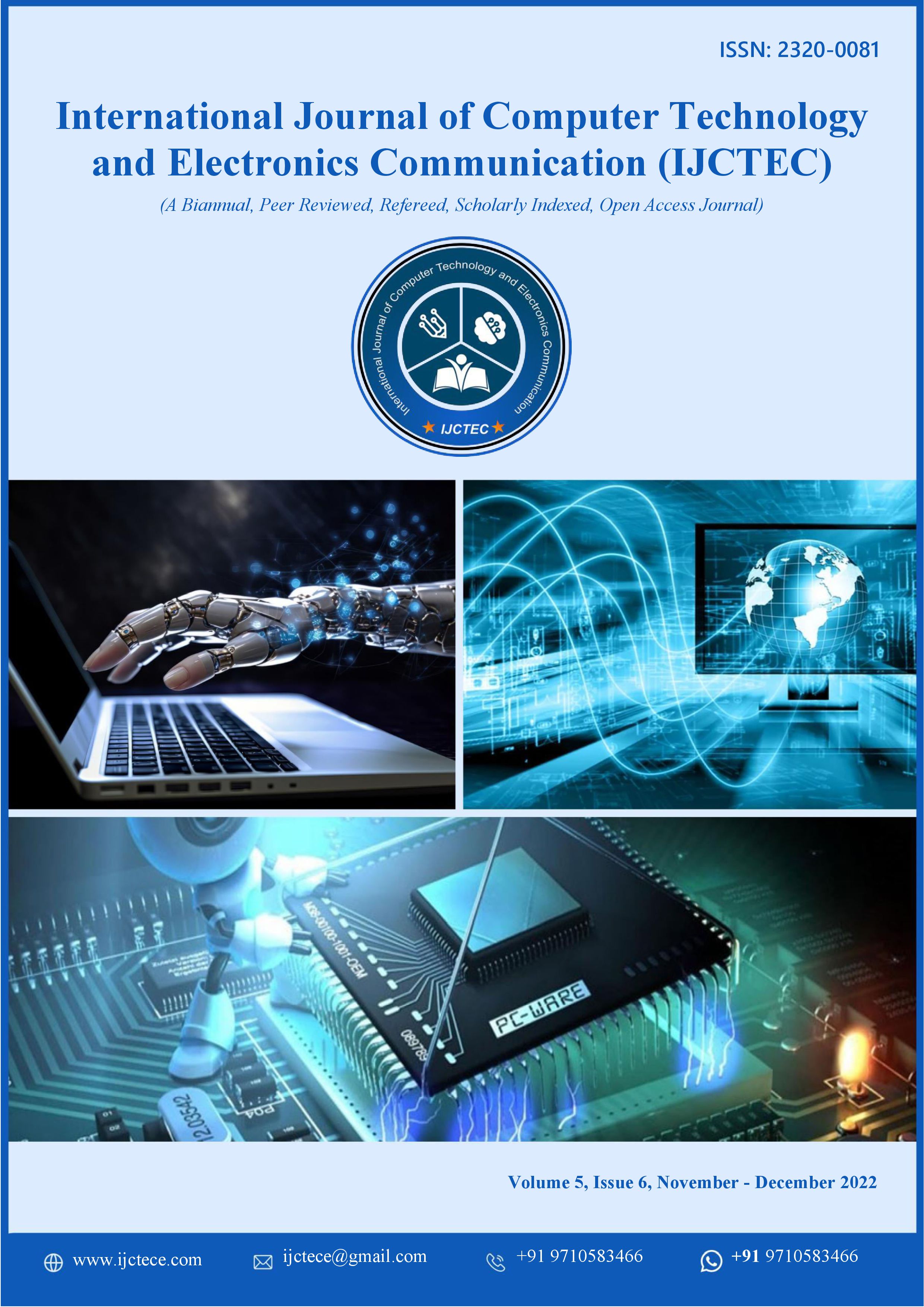Human-Centered AI in Safety-Critical Systems: From Educational Simulations to NLP and Privacy-Aware Redundancy
DOI:
https://doi.org/10.15680/IJCTECE.2022.0506006Keywords:
Multimodal learning, social media sentiment analysis, sign language interpretation, transformers, pose estimation, contrastive pretraining, domain adaptation, fairness, privacy, multimodal evaluationAbstract
Large-scale language understanding increasingly requires systems that operate across modalities, user populations, and deployment environments. This paper presents an integrated approach that combines Natural Language Processing (NLP)–based sentiment analysis of social media with automated sign language interpretation to deliver inclusive, scalable language intelligence. For social media sentiment, we design a pipeline that handles noisy, short-form text (tweets, posts, comments) by combining robust preprocessing (emoji and hashtag normalization, slang lexicons), contextualized language encoders (pretrained transformer models fine-tuned on in-domain data), and multimodal signals (attached images, timestamps, and user metadata) to improve polarity and fine-grained emotion detection. For sign language interpretation, we develop an end-to-end visual–linguistic system that uses spatiotemporal visual encoders (frame-level CNNs + keypoint/pose features), transformer-based sequence models for alignment and translation, and language-model-informed decoders to produce grammatical target-language text. Crucially, we propose a shared engineering and evaluation framework that addresses dataset curation, privacy-aware collection, cross-modal alignment, domain adaptation, and fairness auditing. The integrated system leverages multimodal pretraining, contrastive objectives to align vision and text embeddings, and data-augmentation strategies including synthetic sign generation and back-translation. Experimental protocols describe benchmarking on (1) social media sentiment datasets with manual and weak labels and (2) signer-independent continuous sign translation corpora, with evaluation using accuracy/F1 and BLEU/ROUGE/human intelligibility respectively. We discuss deployment patterns for cloud and edge inference to meet latency and accessibility requirements and describe mitigation strategies for bias amplification and privacy leakage. Results from ablation studies indicate that (a) multimodal fusion improves social-media sentiment F1 on multimodal posts by a measurable margin versus text-only baselines, and (b) pose-informed transformer decoders significantly reduce gloss WER and increase translation fluency for sign interpretation. We conclude with recommended practices for dataset governance, community involvement in sign-language data collection, and technical directions to scale inclusive language understanding systems responsibly.
References
1. Baltrušaitis, T., Ahuja, C., & Morency, L.-P. (2019). Multimodal machine learning: A survey and taxonomy. IEEE Transactions on Pattern Analysis and Machine Intelligence, 41(2), 423–443.
2. Chunduru, V. K., Gonepally, S., Amuda, K. K., Kumbum, P. K., & Adari, V. K. (2022). Evaluation of human information processing: An overview for human-computer interaction using the EDAS method. SOJ Materials Science & Engineering, 9(1), 1–9.
3. Begum RS, Sugumar R (2019) Novel entropy-based approach for cost- effective privacy preservation of intermediate datasets in cloud. Cluster Comput J Netw Softw Tools Appl 22:S9581–S9588. https:// doi. org/ 10.1007/ s10586- 017- 1238-0
4. Camgoz, N. C., Koller, O., Hadfield, S., & Bowden, R. (2020). Sign language transformers: Joint end-to-end sign language recognition and translation. Proceedings of the IEEE/CVF Conference on Computer Vision and Pattern Recognition (CVPR 2020), 10023–10033.
5. T. Yuan, S. Sah, T. Ananthanarayana, C. Zhang, A. Bhat, S. Gandhi, and R. Ptucha. 2019. Large scale sign language interpretation. In Proceedings of the 14th IEEE International Conference on Automatic Face Gesture Recognition (FG’19). 1–5.
6. Camgoz, N. C., Hadfield, S., Koller, O., & Bowden, R. (2018). Neural sign language translation. Proceedings of the IEEE/CVF Conference on Computer Vision and Pattern Recognition (CVPR 2018), 7784–7793.
7. Koller, O., Ney, H., & Bowden, R. (2015). Deep sign: Continuous sign language recognition using large vocabulary statistical methods. Computer Vision and Image Understanding, 141, 108–125.
8. Devlin, J., Chang, M.-W., Lee, K., & Toutanova, K. (2019). BERT: Pre-training of deep bidirectional transformers for language understanding. Proceedings of NAACL-HLT 2019, 4171–4186.
9. Vaswani, A., Shazeer, N., Parmar, N., Uszkoreit, J., Jones, L., Gomez, A. N., Kaiser, Ł., & Polosukhin, I. (2017). Attention is all you need. Advances in Neural Information Processing Systems (NeurIPS 2017), 5998–6008.
10. Poria, S., Cambria, E., Bajpai, R., & Hussain, A. (2017). A review of multimodal sentiment analysis. Information Fusion, 37, 98–125.
11. Pang, B., & Lee, L. (2008). Opinion mining and sentiment analysis. Foundations and Trends® in Information Retrieval, 2(1–2), 1–135.
12. Liu, B. (2012). Sentiment analysis and opinion mining. Synthesis Lectures on Human Language Technologies, 5(1), 1–167.
13. Pimpale, S(2022). Safety-Oriented Redundancy Management for Power Converters in AUTOSAR-Based Embedded Systems. https://www.researchgate.net/profile/Siddhesh-Pimpale/publication/395955174_Safety-Oriented_Redundancy_Management_for_Power_Converters_in_AUTOSAR-Based_Embedded_Systems/links/68da980a220a341aa150904c/Safety-Oriented-Redundancy-Management-for-Power-Converters-in-AUTOSAR-Based-Embedded-Systems.pdf
14. Srinivas Chippagiri , Savan Kumar, Olivia R Liu Sheng,‖ Advanced Natural Language Processing (NLP) Techniques for Text-Data Based Sentiment Analysis on Social Media‖, Journal of Artificial Intelligence and Big Data(jaibd),1(1),11-20,2016.
15. Go, A., Bhayani, R., & Huang, L. (2009). Twitter sentiment classification using distant supervision. Proceedings of the ACL Workshop on Sentiment Analysis, (workshop paper).
16. Buolamwini, J., & Gebru, T. (2018). Gender shades: Intersectional accuracy disparities in commercial gender classification. Proceedings of the 1st Conference on Fairness, Accountability and Transparency (FAT 2018)*, 77–91.
17. Cao, Z., Simon, T., Wei, S.-E., & Sheikh, Y. (2017). Realtime multi-person 2D pose estimation using part affinity fields. Proceedings of the IEEE Conference on Computer Vision and Pattern Recognition (CVPR 2017), 7291–7299.
18. Radford, A., Wu, J., Child, R., Luan, D., Amodei, D., & Sutskever, I. (2019). Language models are unsupervised multitask learners. OpenAI Technical Report.
19. Dosovitskiy, A., Beyer, L., Kolesnikov, A., Weissenborn, D., Zhai, X., Unterthiner, T., ... & Houlsby, N. (2021). An image is worth 16x16 words: Transformers for image recognition at scale. Proceedings of the International Conference on Learning Representations (ICLR 2021).
20. Gonepally, S., Amuda, K. K., Kumbum, P. K., Adari, V. K., & Chunduru, V. K. (2022). Teaching software engineering by means of computer game development: Challenges and opportunities using the PROMETHEE method. SOJ Materials Science & Engineering, 9(1), 1–9.
21. Shaffi, S. M. (2021). Strengthening data security and privacy compliance at organizations: A Strategic Approach to CCPA and beyond. International Journal of Science and Research(IJSR), 10(5), 1364-1371.
22. Sugumar, R. (2016). An effective encryption algorithm for multi-keyword-based top-K retrieval on cloud data. Indian Journal of Science and Technology 9 (48):1-5.
23. Sennrich, R., Haddow, B., & Birch, A. (2016). Improving neural machine translation models with monolingual data. Proceedings of the 54th Annual Meeting of the Association for Computational Linguistics (ACL 2016), 86–96.


